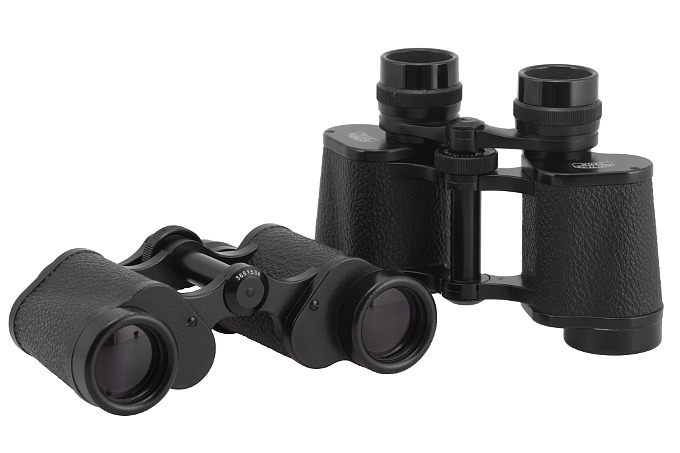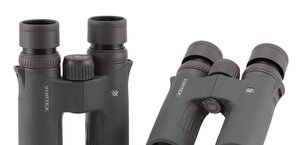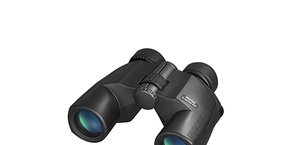Legendary binoculars - Carl Zeiss Jena Deltrintem 8x30
1. Carl Zeiss Jena Deltrintem 8x30 - 1920-1990
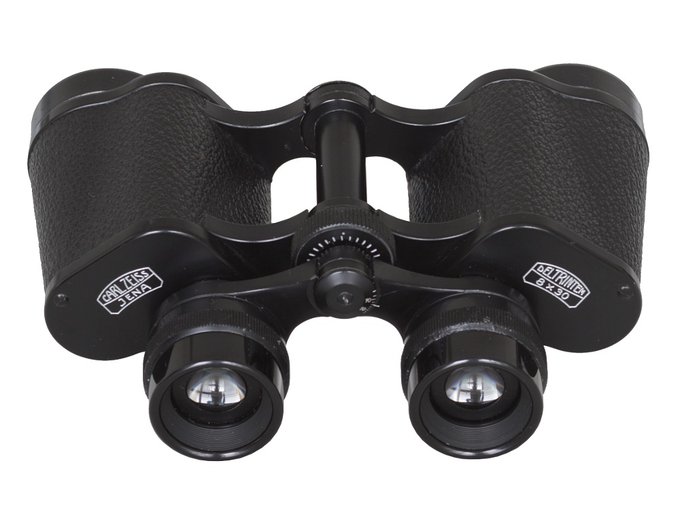 The Carl Zeiss Jena Deltrintem 8x30 binoculars from 1939. |
When you already talk about Jena products it would be difficult not to mention the 8x30 model, perhaps one of the most forged pair of binoculars of all time. Saying ‘forged’ I mean the widest sense of that word. The fakes including the full name of the lens and the Carl Zeiss logo were quite popular. Additionally that particular model inspired a vast array of products coming from the Eastern Block and from the Western Europe as well.
Please Support UsIf you enjoy our reviews and articles, and you want us to continue our work please, support our website by donating through PayPal. The funds are going to be used for paying our editorial team, renting servers, and equipping our testing studio; only that way we will be able to continue providing you interesting content for free. |
- - - - - - - - - - - - - - - - - - - - - - - - - - - - - - - - - - - - - - - - - - - - - - - -
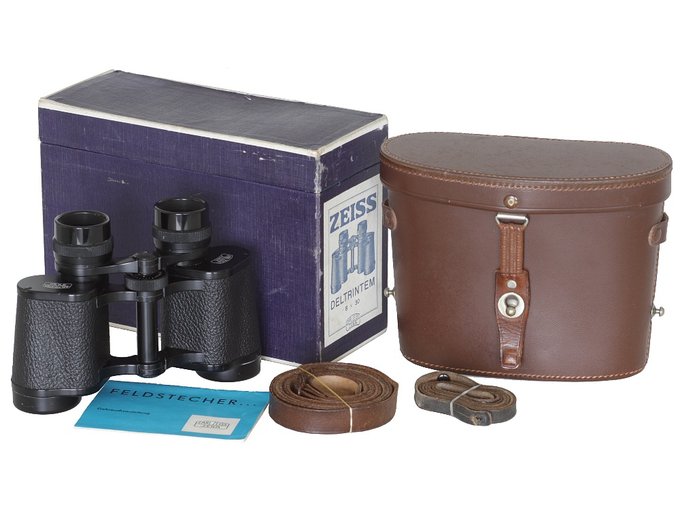 The Carl Zeiss Jena Deltrintem 8x30 with original box and a dedicated casing. A 1939 model. |
It all started in 1920 so in an era when all Zeiss binoculars were produced in one place. The 8x30 model was launched at that time exactly, already in two versions, with individual focusing (Deltrentis) and central focusing (Deltrintem).
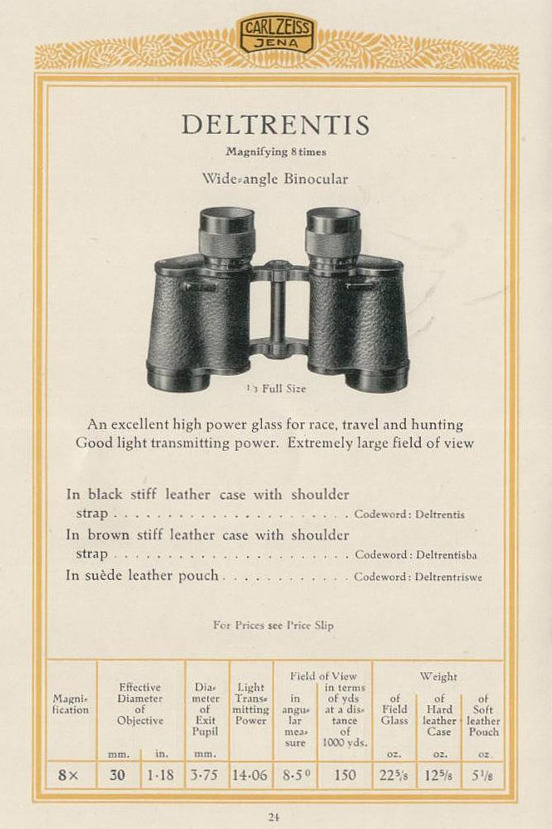 A page from the 1923 Carl Zeiss catalogue, presenting the Deltrentis 8x30. |
The binoculars were a small, classic instrument with an achromatic objective lens (a glued crown and flint glass doublet) and type I Porro prisms with air between them. As the eyepiece they decided to use a wide-angle (68 degrees) Koenig system consisting of four elements but positioned in just two groups (3+1). Such a small number of air-to-glass surfaces was a norm in those times. There were no antireflectiion coatings so fewer air-to-glass surfaces meant higher transmission. The original optical construction of 8x30 models featured as many as 10 air-to-glass surfaces. Taking into account losses of light on every surface amounting to about 4.5% the transmission of the whole system didn’t exceed 63%.In reality it was significantly lower than that because the light absorption in older types of glass was higher, especially when it comes to blue light. The real transmission values of 6x30 and 8x30 binoculars produced before II WW reached just 40-50%.
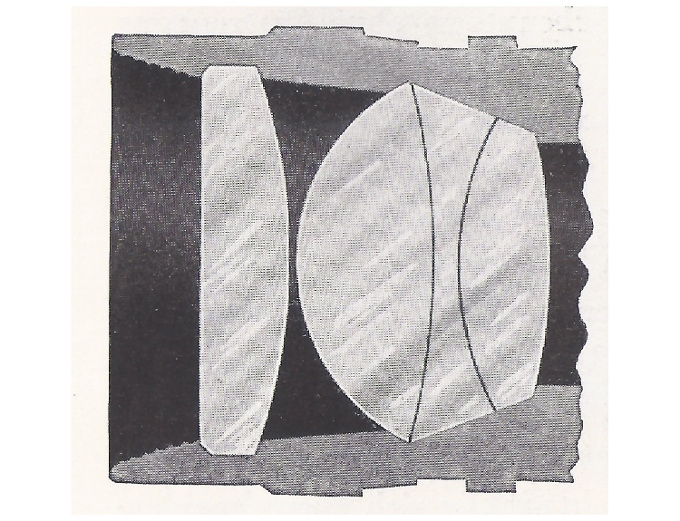 4-element Koenig eyepiece, from Deltrentis and Deltrintem models produced in 1920-1947. |
The original Koenig construction was presented in 1915 and consisted of three elements (2+1). It provided a well-corrected field of view of 55 degrees and a quite comfortable eye relief for those times. The modification of the Koenig eyepiece, increasing the number of elements to four, allowed to widen the useful field to 60-70 degrees and correct the distortion well at the same time. Small wonder such an efficient solution was adopted for the Deltrintem and Deltrentis binoculars.
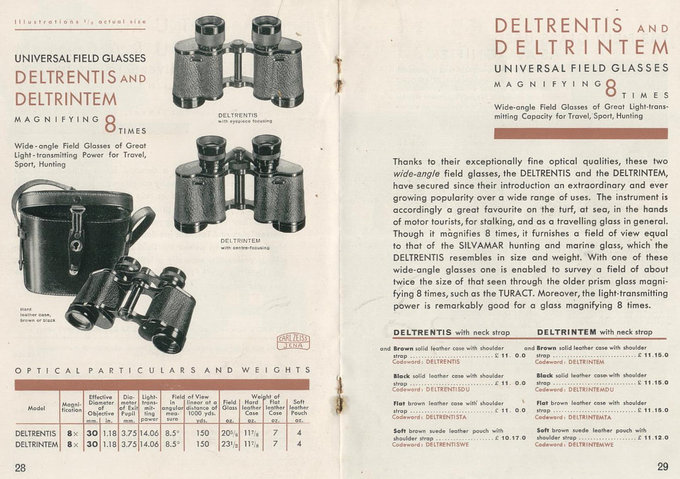 Deltrentis and Deltrintem 8x30 models as presented by the 1931 Zeiss catalogue. |
When it comes to the weight of the models, described above, there are a lot of ambiguities. According to the Zeiss binoculars list published on Home Europa web page at the very beginning the metal casing was very heavy for 30 mm class instruments; the Deltrentis and the Deltrintem models weighed respectively 702 grams and 742 grams so as much as contemporary instruments featuring 40-42 mm front lenses and a heavy rubber armour. In 1928 the casing was redesigned with magnesium composites and their weight decreased. Home Europa states that after those changes the Deltrintem weighed 400 grams and the Deltrentis 390 grams. Still those numbers don’t match official data from catalogues.
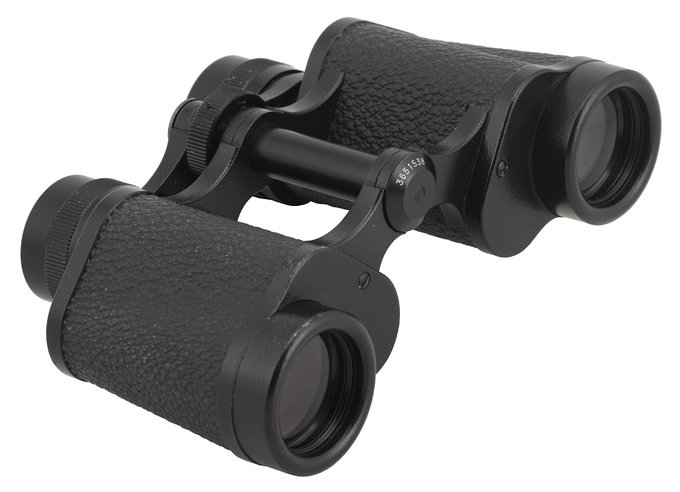 The Carl Zeiss Jena Deltrintem 8x30 produced in 1969. |
A 1923 leaflet states that the Deltrentis weighted 645 grams and the Deltrintem 700 grams. A 1928 catalogue, published in the year of the casing change, features respectively 585 and 665 grams. Exactly the same values you can find in a 1931 catalogue. Still the real weight of the 1939 Deltrentis from my private collection amounts to 416 grams.
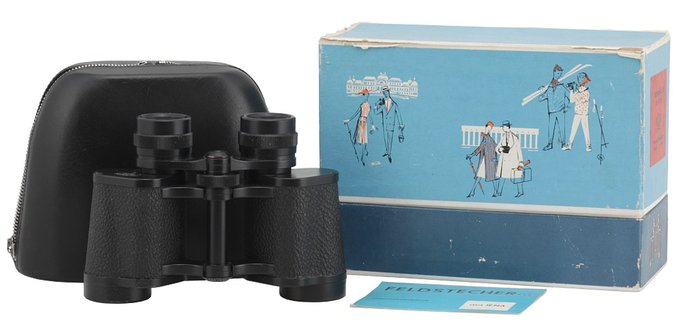 The 1969 Carl Zeiss Jena Deltrintem 8x30 with orginal box and case. |
After the war that strange situation concerning the weight normalized a bit. All available catalogues (two from the 50s, one from the 60s and one from the 80s of the twentieth century) state the same weight: 510-520 grams for all three models so the Deltrentis, the Deltrintem and the Jenoptem.
In 1935 an Ukraninan physicist Olexander Smakula working in Germany discovered that if you put on a lens a very thin layer of a substance which refraction index falls between the refraction indexes of air and glass, the amount of light reflected from an air-to-glass surface decreases notably. It was the beginning of one-layer antireflection coatings T (from the word Transparenz) which were used for the first time in binoculars during II WW. Some sources (e.g. marketing material published in Polish by Carl Zeiss Jena in the 50s of the twentieth century) state that the first instruments with such coatings were launched on the market already in 1937. The 1939 Deltrintem, presented in photos, doesn’t have any antireflection coatings so you might assume that the first Deltrentis and Deltrintem devices with such coatings on elements and prisms appeared after 1939. As the coatings of that time reflected about 1.5% of light on one air-to-glass surface the transmission of described binoculars in the centre of the visible spectrum increased from about 50-60% to about 70-80%. It was a huge leap forward, that difference made the image sharpness and its contrast far better.
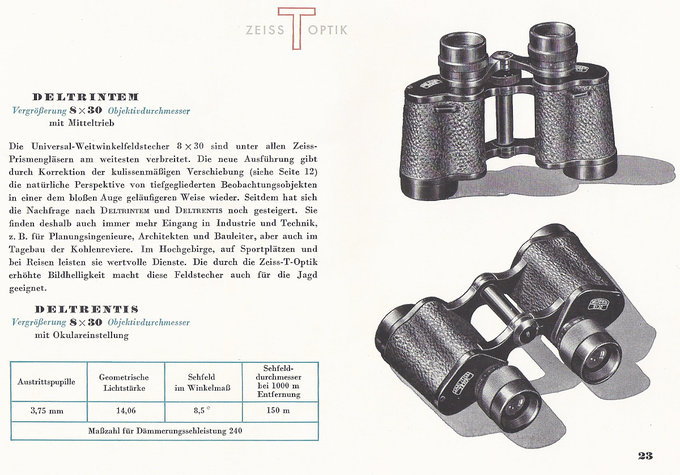 The Deltrentis and Deltrintem 8x30 models as presented by the 1952 Carl Zeiss Jena catalogue. |
After the capitulation of Germany in May 1945 Jena fell in the hands of Western Allied Powers. A part of the factory equipment was taken to Stuttgart. Eventually Jena was included in the Soviet Occupation Zone and became a part of the German Democratic Republic. Russians took another part of equipment as war reparations and the rest became a base of the VEB Zeiss Jena conglomerate which started the production of binoculars after a while. At first the production volume was low, with years (e.g. 1948) when not even one pair left the assembly line. However, at the end of the 40s and at the beginning of the 50s of the twentieth century the company started to run at full steam and soon the production reached several thousands of binoculars a year. Among that number the Deltrintem and the Detrentis devices, along the 7x50 and the 10x50 models, constitute the core of their offer.
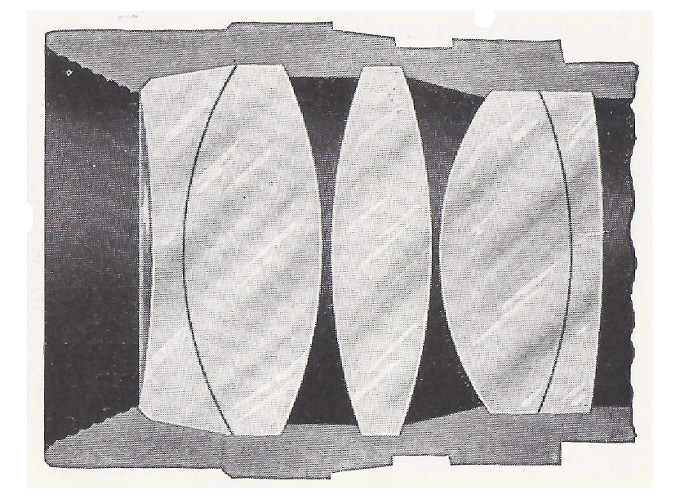 A 5-element Erfle eyepiece used in the Deltrintem, Deltrentis and Jenoptem 8x30 models from 1947. |
Before the production was in full swing 1947 brought another very serious change. The wide-angle Erfle eyepiece had been known since 1917 and used successfully in 10x50 Zeiss devices. Right after the war 8x30 models included that construction as well. With lens coatings the 2+1+2 set with as many as six air-to-glass surfaces wasn’t such a huge challenge as in times before the war, when coatings hadn’t been known yet.
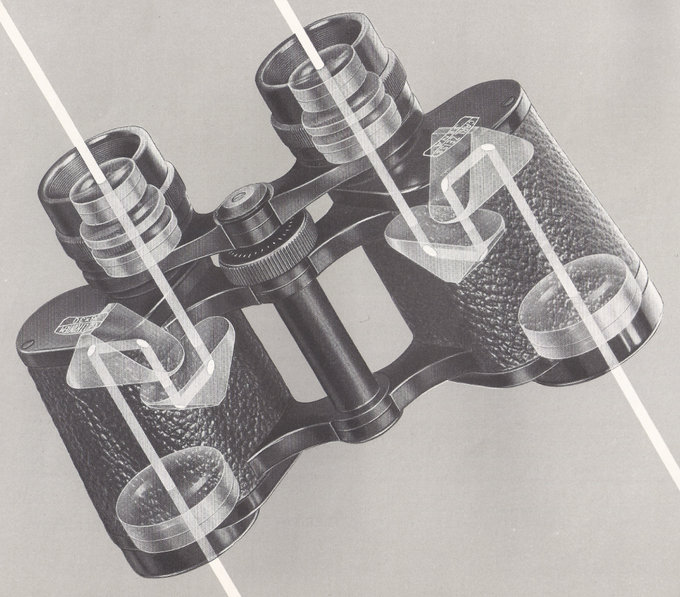 The 1952 optical and mechanical construction diagram of the Carl Zeiss Jena Deltrintem 8x30, after implementing the new, 5-element Erfle eyepiece. |
Huge astigmatism was the basic flaw of the Erfle construction so that type of eyepiece was unsuitable for instruments at high powers. Still it was the only serious flaw, not especially applicable in binoculars which usually are low power instruments. The eyepiece performed well in such models as the Dekarem and the Dekaris 10x50 so applying it to 8x30 models was more than reasonable. The Erfle eyepiece provided a field of view exceeding 60 degrees, well-corrected when it comes to most optical aberrations, and a sensible eye relief as well. The overall image quality improved, especially when compared to the older Koenig system. The increase of distortion was the only negative change.
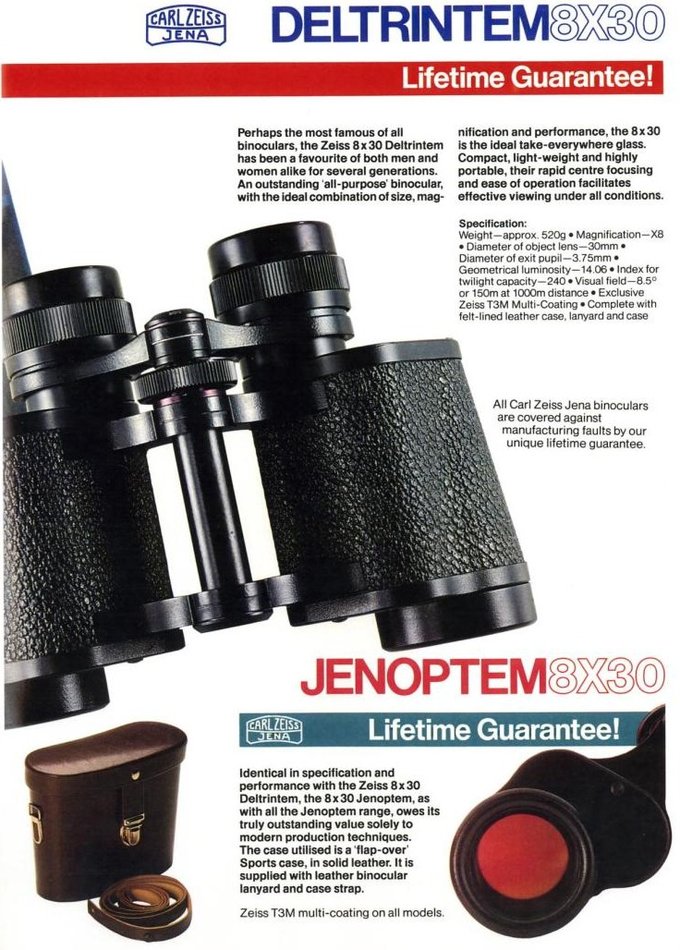 A page from the 1985 Carl Zeiss Jena catalogue describing the Deltrintem 8x30 and the Jenoptem 8x30 models. Source: H. Merlitz. |
In the 50s and the 60s of the twentieth century the Jena factory was producing several tens of thousands binoculars a year. The demand was so high that in the 70s the production was actually increased, exceeding a hundred thousand of pieces in many years of that decade. 1978 brought another change concerning optics – the multi-layer T3M coatings. One-layer magnesium fluorite coatings used in previous years were characterized by blue reflections from elements; the T3M coatings were orange-pink for a change. They managed to improve colour rendering (the image was less yellow) and raised the transmission level. In the centre of the visible spectrum the binoculars were able to deliver 90-92% of light which is a very good result even by contemporary standards. With 12 air-to-glass surfaces it means the loss was just of 0.6-0.7% on one of them. Still it was true only for green-yellow light. For red and blue-purple light the transmission was much worse so Jena pairs of binoculars still warmed the colours giving the images a yellowish hue.
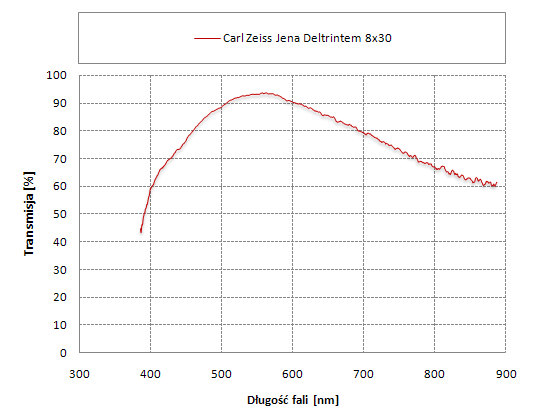 Transmission graph of the Carl Zeiss Jena Deltrintem 8x30 produced in 1985. |
The introduction of multi-coatings made Jena products even more popular – in 1980 the record number of 471320 pairs of binoculars left the assembly lines. 1983 was second most efficient production year, with 373300 models released on the market; in 1988 there were 260300 pieces of binoculars produced.
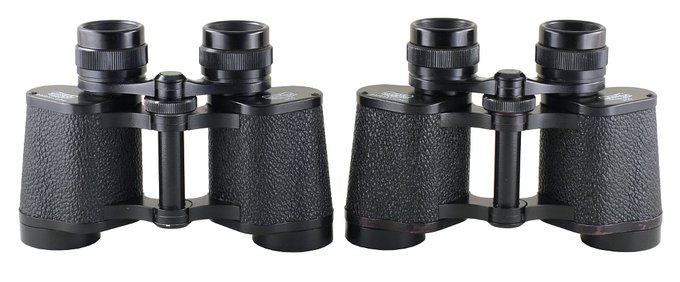 The Jenoptem 8x30 and the Deltrintem 8x30 – both produced in 1985. Find-a-difference type of a riddle. |
The turn of the 70s and the 80s brought changes in the 8x30 line-up. Next to the Deltrintem and the Deltrentis you see a new Jenopten which, at first glance, doesn’t differ much from the Deltrintem. You can find info that the Jenoptem was aimed more at the civilian market and the Deltrintem was for the armed forces. It’s difficult to say whether it was true or not. The Deltrentis was actually designed for the military purposes, equipped with an individual focusing system on every eyepiece; it was used not only by the army but also by secret services (including the GDR’s Stasi). Even today you can find used Deltrentis models marked as MdI (an abbreviation from Ministerium des Innern, Minstry of Interior in English).
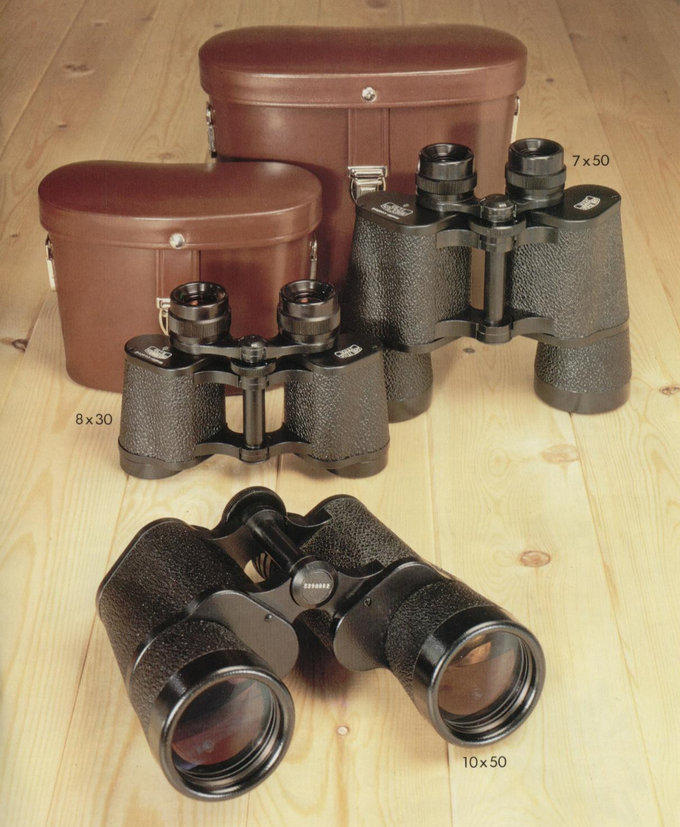 A page from the 1980 Carl Zeiss Jena catalogue presenting the Jenoptem series - the 8x30, the 7x50 and the 10x50 models. Source: H. Merlitz. |
The Carl Zeiss Jena 8x30 binoculars were most certainly produced till 1990. It is also possible that some specimens were released in 1991 as that year over 5000 binoculars left the assembly line with the widely popular, world-wide known logo. The same year, however, the Berlin Wall fell and the claims of the Western Zeiss branch, the legal heir of the whole achievements of that company, meant the Jena plant lost the right to use the Zeiss logo. Nature doesn’t like void; almost exactly at the same time (1 August 1991) the factory with 550 workers was bought by Bernhard Docter and renamed into Docter-Optic-Eisfeld GmbH. The production was continued, only the name of the binoculars changed into Docter Optic. That’s why at the beginning of the 90s of the twentieth century the old, good Deltrintem 8x30 could be bought as the Docter Optic Classic 8x30.
What’s interesting, at first a number of Deltrintems, released on the market, had the Carl Zeiss Jena logo on the one side and the Docter Optic on the other. With time the binoculars offered by Docter got completely new and much more efficient antirelection multilayer coatings which improved their optical properties in a significant way. Also some slight design modifications were introduced (e.g. rubber eyecups in the 8x30 and the 7x50 models).
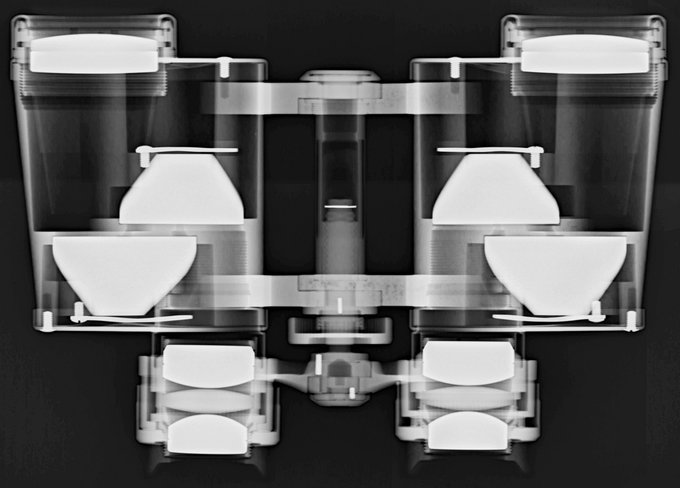 X-ray photo of the Carl Zeiss Jena Deltrintem 8x30 binpculars. Phot. Obserwatorek. |
The last specimens of the Docter Optic Classic 8x30 were produced in 1995. That year Bernhard Docter went bankrupt and the company decreased its production looking for a potential buyer. In 1997 they were bought by the Analytik Jena GmbH but it is a material for another story.
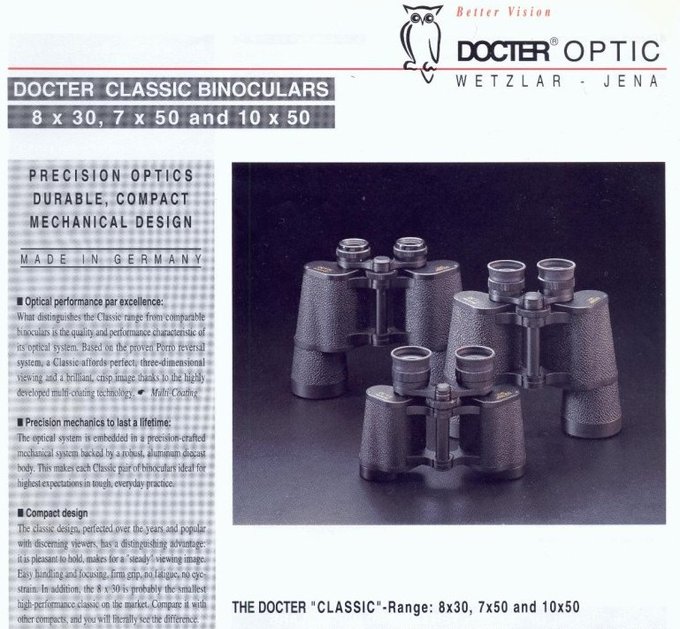 A page from the Docter Optic catalogue with the Classic series binoculars. Source: H. Merlitz. |
During 75 years of almost incessant production, from the first 1920 models to the last 1995 Docters Cassic, several million of 8x30 devices found their way to shop shelves. Even if you don’t add the fakes to the numbers that volume undoubtedly makes them the most popular pair of binoculars in history. Its presence in the ‘Legendary binoculars’ series was obligatory and I am very glad this part was dedicated to that extraordinary product.
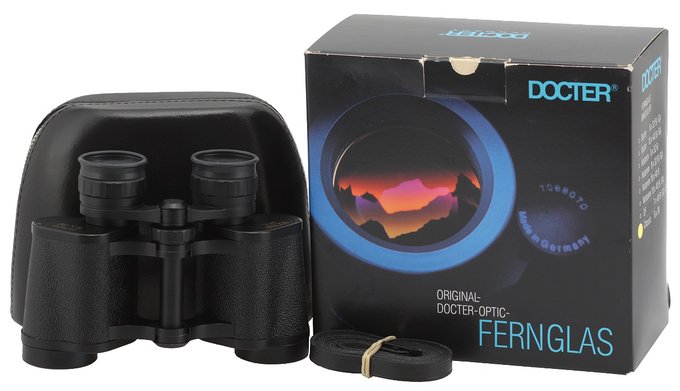 Docter Classic 8x30 binoculars. |
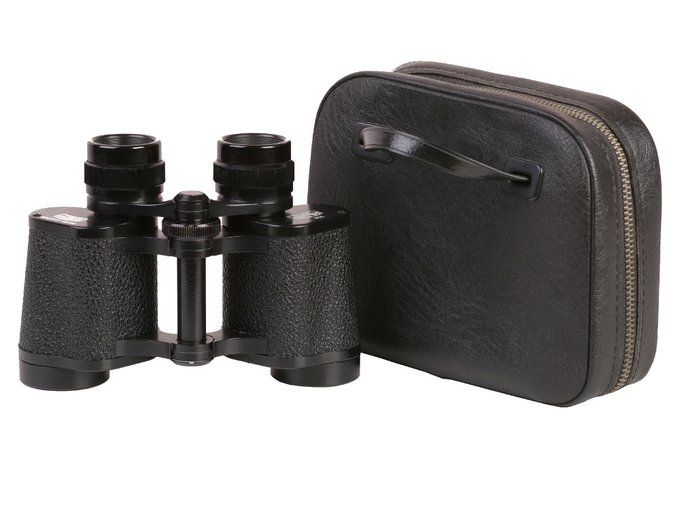 The 1985 Carl Zeiss Jena Jenoptem 8x30. |




